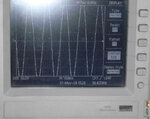Tahmid
Advanced Member level 6
- Joined
- Jun 17, 2008
- Messages
- 4,756
- Helped
- 1,798
- Reputation
- 3,588
- Reaction score
- 1,656
- Trophy points
- 1,413
- Location
- Berkeley, California
- Activity points
- 30,585
I don't really see much of a problem. If you use a MOSFET rated for the required current, ie, you use one single MOSFET, it will be very expensive and it is not as widely available. Also, the larger MOSFETs have larger Ciss. Either way, paralleling or using a single large MOSFET, Ciss for such MOSFET(s) handling this large current will naturally be very high. That is why you must use drivers to drive them. These drivers must be able to handle the required gate current.
But by paralleling common MOSFETs such as the IRF3205, you get a cost-effective solution with commonly available parts, whilst getting other benefits such as reduced RDS(on), greater current handling capacity, etc. MOSFETs can also be easily paralleled as they have a negative temperature coefficient, so there is less chance of encountering thermal runaway.
In all inverters in Bangladesh, India and Pakistan, for large capacities, common MOSFETs are paralleled as mentioned. And they yield no problems and run for years.
In exchange for the higher gate drive current requirement, you gain other benefits.
Hope this helps.
Tahmid.
---------- Post added at 00:08 ---------- Previous post was at 00:03 ----------
For example, let's take the IXTK250N10 and the IRF3205 MOSFETs. The IXTK250N10 (rated for 250A, RDSon of 5mΩ) has a Ciss of about 13nF; IRF3205 (rated for 110A, RDSon of 8mΩ) has a Ciss of about 3nF. If we parallel four IRF3205s, the total Ciss is about 12nF (still less than that of the IXTK250N10). The RDS(on) is 2mΩ (less than half that of IXTK250N10). Max current capacity is about 440A (little less than double that of the IXTK250N10). So, we have less than half the RDS(on), almost double the max current capacity and yet less Ciss than the single MOSFET. The only downside is that we're using 4 MOSFETs, instead of 1. But the IXTK250N10 is much more difficult to find than the IRF3205 and probably more expensive.
Hope this helps.
Tahmid.
But by paralleling common MOSFETs such as the IRF3205, you get a cost-effective solution with commonly available parts, whilst getting other benefits such as reduced RDS(on), greater current handling capacity, etc. MOSFETs can also be easily paralleled as they have a negative temperature coefficient, so there is less chance of encountering thermal runaway.
In all inverters in Bangladesh, India and Pakistan, for large capacities, common MOSFETs are paralleled as mentioned. And they yield no problems and run for years.
In exchange for the higher gate drive current requirement, you gain other benefits.
Hope this helps.
Tahmid.
---------- Post added at 00:08 ---------- Previous post was at 00:03 ----------
For example, let's take the IXTK250N10 and the IRF3205 MOSFETs. The IXTK250N10 (rated for 250A, RDSon of 5mΩ) has a Ciss of about 13nF; IRF3205 (rated for 110A, RDSon of 8mΩ) has a Ciss of about 3nF. If we parallel four IRF3205s, the total Ciss is about 12nF (still less than that of the IXTK250N10). The RDS(on) is 2mΩ (less than half that of IXTK250N10). Max current capacity is about 440A (little less than double that of the IXTK250N10). So, we have less than half the RDS(on), almost double the max current capacity and yet less Ciss than the single MOSFET. The only downside is that we're using 4 MOSFETs, instead of 1. But the IXTK250N10 is much more difficult to find than the IRF3205 and probably more expensive.
Hope this helps.
Tahmid.

